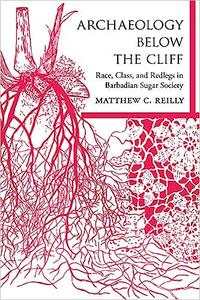Archaeology below the Cliff Race, Class, and Redlegs in Barbadian Sugar Society

Free Download Matthew C. Reilly, "Archaeology below the Cliff: Race, Class, and Redlegs in Barbadian Sugar Society "
English | ISBN: 0817320288 | 2019 | 272 pages | PDF | 10 MB
First book-length archaeological study of a nonelite white population on a Caribbean plantation
Archaeology below the Cliff: Race, Class, and Redlegs in Barbadian Sugar Society is the first archaeological study of the poor whites of Barbados, the descendants of seventeenth-century European indentured servants and small farmers. "Redlegs" is a pejorative to describe the marginalized group who remained after the island transitioned to a sugar monoculture economy dependent on the labor of enslaved Africans. A sizable portion of the "white" minority, the Redlegs largely existed on the peripheries of the plantation landscape in an area called "Below Cliff," which was deemed unsuitable for profitable agricultural production. Just as the land on which they resided was cast as marginal, so too have the poor whites historically and contemporarily been derided as peripheral and isolated as well as idle, alcoholic, degenerate, inbred, and irrelevant to a functional island society and economy.
Using archaeological, historical, and oral sources, Matthew C. Reilly shows how the precarious existence of the Barbadian Redlegs challenged elite hypercapitalistic notions of economics, race, and class as they were developing in colonial society. Experiencing pronounced economic hardship, similar to that of the enslaved, albeit under very different circumstances, Barbadian Redlegs developed strategies to live in a harsh environment. Reilly's investigations reveal that what developed in Below Cliff was a moral economy, based on community needs rather than free-market prices.
Reilly extensively excavated households from the tenantry area on the boundaries of the Clifton Hall Plantation, which was abandoned in the 1960s, to explore the daily lives of poor white tenants and investigate their relationships with island economic processes and networks. Despite misconceptions of strict racial isolation, evidence also highlights the importance of poor white encounters and relationships with Afro-Barbadians. Historical data are also incorporated to address how an underrepresented demographic experienced the plantation landscape. Ultimately, Reilly's narrative situates the Redlegs within island history, privileging inclusion and embeddedness over exclusion and isolation.
Read more
Links are Interchangeable - Single Extraction
